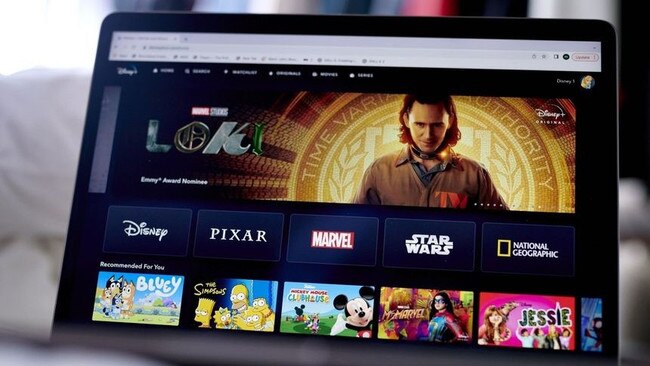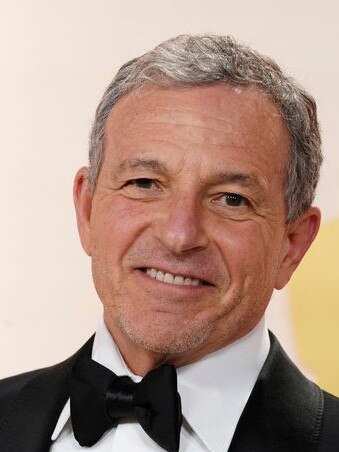Disney+ users paid up when the price rose
94 per cent of the platform’s subscribers absorbed the $3 a month rise, new data show, suggesting room for further increases.

Subscribers to Walt Disney Co’s flagship Disney+ streaming service barely blinked at a 38 per cent price increase that the company imposed in December last year as part of its launch of an ad-supported streaming product.
About 94 per cent of subscribers to the old, ad-free Disney+ service stayed with the product at a higher price point and swallowed the $US3 a month price increase, according to new data from subscription-analytics firm Antenna.
Disney declined to comment on Antenna’s numbers, but the data suggests the company has some headroom to raise the streaming price beyond the current level of $US10.99 a month.
Newly returned chief executive Robert Iger has hinted that increases may be coming.
“In our zeal to grow global (subscriptions), I think we were off in terms of that pricing strategy, and we’re now starting to learn more about it and to adjust accordingly,” Mr Iger said last week at a conference hosted by investment bank Morgan Stanley.

“We have a lot of rationalisation to do from a pricing perspective, but that’s one path to profitability.”
In 2019, the company launched Disney+ at a price of $US6.99 a month.
Since replacing Bob Chapek as chief executive in November last year, Mr Iger has announced wide-ranging cost-saving measures, including a proposed $US5.5bn ($8.1bn) in cuts and 7000 lay-offs. About $3bn of those cuts will come from content budgets, Disney has said.
The entertainment giant also said it would pull back on general entertainment aimed at adults, and is evaluating options for what to do with Hulu, the streaming service that specialises in general-entertainment shows and is two-thirds owned by Disney, one-third owned by Comcast Corp.
Under the terms of Disney’s 2019 purchase of its share of Hulu, either party has the right to force a sale of the company starting at the beginning of next year.
“Disney+ is truly the ultimate babysitter on demand,” said Richard Greenfield, a media analyst with LightShed Partners.
“If you look at the popularity of titles like Moana and Mickey Mouse Clubhouse, it’s clear what resonates with families. My guess is that there’s still pricing power even at $US10.99.” Around half of Disney+ subscribers are families with children, Disney has said.
The service, which also features shows and movies from Disney’s Star Wars and Marvel superhero franchises, “is still underpriced for families with kids under the age of 10”, Mr Greenfield said, while its content aimed at older audiences is more dependent on the quality of individual titles.
Disney launched its ad-supported tier in early December as part of its drive to achieve profitability in its direct-to-consumer segment, which has lost nearly $US10bn since Disney+ was launched in late 2019.
Most large streaming services have pivoted in the past year to focus on profitability rather than on quickly growing their subscriber bases, the result of a slowdown in new subscribers and increasing pressure from investors to stem losses. Selling ads against streaming content is a key component of this shift.
The Antenna data also showed that the Disney+ ad-supported product grew faster in its first three months than did Netflix, which began offering a similar product in November last year, and HBOMax, which launched its ad-supported tier in mid-2021. The firm’s numbers are based on consumer-spending data from thousands of US consumers.
Ad-supported versions of Disney+ – including both the stand-alone service and the trio of ad-supported Disney+, Hulu and ESPN+ – accounted for 20 per cent of new sign-ups in December, 27 per cent in January and 36 per cent in February, Antenna found. Disney charges $US7.99 a month for the version of Disney+ with ads.
Netflix’s Basic With Ads product accounted for 9 per cent of new sign-ups in November, 15 per cent in December and 19 per cent in January, Antenna said. The company’s ad-supported product costs $US6.99 a month, compared with $US9.99 for the ad-free Basic version.
Warner Bros Discovery Inc’s HBOMax with ads represented 14 per cent of new subscriptions in June 2021, 16 per cent in July and 21 per cent in August. HBOMax is priced at $US9.99 a month with ads and $US15.99 without them.
“Disney+ launched the ad-supported product like an entertainment company. Netflix launched it like a tech company,” Antenna chief executive and co-founder Jonathan Carson said.
“With Netflix, it was a limited release, only on one of the plans, and you kind of had to search to find it. Tech companies classically release small, do a lot of testing, iterate, and then hit the gas if successful.
“Disney+ had some more sizzle, a bigger bang. It was more heavily featured, available in more product configurations, and they’re also seeing faster pick-up.”
The Wall Street Journal






